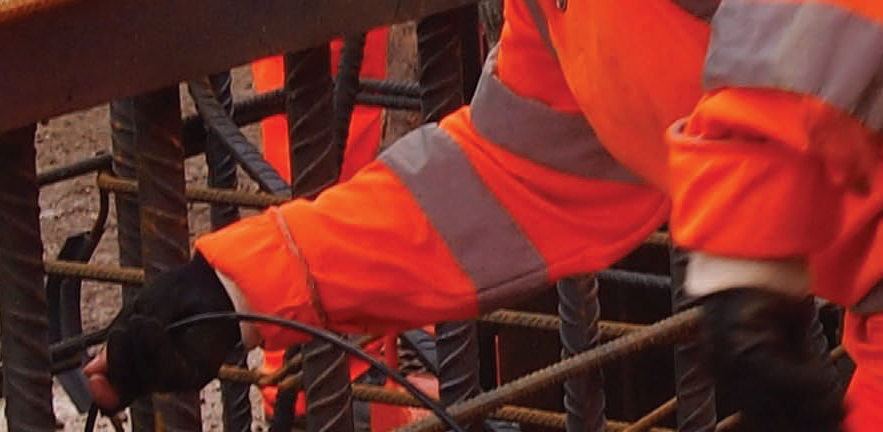
The project
The Transport for London Northern Line Extension project will extend the London Underground Northern line from Kennington to the disused Battersea Power Station. Construction on the £1bn extension began in 2015 and the new line could be open by 2020.
Cementation Skanska is using distributed fibre optic sensing techniques on an unprecedented scale for pile and wall integrity testing during current excavation work constructing the new stations and tunnels on the extended line. This novel application of fibre optic sensing emerged from research at the University of Cambridge and was standardised by CSIC to technology readiness levels required for industry adoption. The commercial application of distributed fibre optic sensing by Cementation Skanska has allowed the company to add a new specialist service to its portfolio, called CemOptics. The new technology is already shortlisted for two industry awards.
Work to build the new Battersea Station requires Cementation Skanska to:
- construct more than 600m of deep basement diaphragm walls − 1.2m thick diaphragm walls, up to 60m deep
- construct 74 large diameter bearing piles, up to 2.4m diameter and 60m deep
- install in excess of 50 km of FO cable to completely replace cross hole sonic logging in both the piles and diaphragm walls.
The background
In 2014 Echo Ouyang, a geotechnical engineer at Cementation Skanska and PhD student of CSIC Co-Investigator, Professor Kenichi Soga, worked with CSIC on a number of projects investigating the use of distributed fibre optic temperature sensing for pile and wall integrity testing; fibre optics (FO) was used for measuring concrete temperature during curing and assessing the integrity of the element. The work was led by Andrew Bell, Chief Engineer at Cementation Skanska.
The potential long-term economic and safety-enhancing benefits of using FO more widely was recognised by Cementation Skanska. Over the next two years CSIC delivered training and on-site support enabling the company to reach commercial readiness with the FO technology, CemOptics.
The innovation
Thermal methods for testing the integrity of piles and wall elements by identifying anomalies are gaining prominence. Distributed fibre optic temperature sensing provides a non-intrusive, safe and cost effective technique. It is a robust alternative to point sensing methods, which require the connection of numerous sensors.
Low-cost standard telecommunication fibre optic cables are simply attached to several sides of the reinforcement cage of the element and temperature measurements obtained at close spatial intervals along the cage. The measurements are taken at short time intervals to record the evolution of the temperature profile of the element during concrete curing.
The principle behind this method is based on the properties of the spectrum of the backscattered light within an optical fibre. The method uses standard optical fibres into which a laser pulse is launched and the spectrum of the backscattered light analysed. Temperature is inferred from the properties of some of the components of the spectrum.
The training
CSIC training in the use of distributed fibre optics was developed to meet the specific needs of Cementation Skanska:
- a two-day bespoke training workshop delivered to six Cementation Skanska operatives, including pilers, engineers and technicians, at the company’s Doncaster site. The programme covered how to splice FO cables, handling cables on site and attaching cables to pile cages
- Maria Scott, a technician at Cementation Skanska, spent two weeks working with and learning from members of CSIC’s deployment team at the University of Cambridge where she was taught everything she needed to know about FO for pile and integrity wall testing. This collaboration equipped Maria with the knowledge and skills to independently install FO on Cementation Skanska projects, including the Northern Line Extension
- software was developed in collaboration with Cementation Skanska that allows processing of the data and visualising of temperature profiles to happen automatically.
Impact and value
Cementation Skanska is now using fibre optics for pile and wall integrity testing on an unprecedented scale. There is potential to extend the method worldwide, across the company’s entire project portfolio. CemOptics has now been proven to improve safety, quality and increase production (thus reducing costs) on site.
CemOptics:
- replaces traditional cross hole sonic logging method
- delivers visible improvement in safety
- brings technical, quality and safety benefits acknowledged by all stakeholders
- is shortlisted for two industry awards – Ground Engineering 2016 Award for Technical Excellence and Product and Equipment Innovation.
Cementation Skanska reports multiple benefits of the collaboration with CSIC:
- enabled partners to jointly develop the technology and roll out on demonstration projects
- fostered and encouraged a collaborative approach to research and shared recognition
- delivered ‘industry level’ training in the use of new technology
- provided excellent support to Cementation Skanska in move to commercialisation
- accelerated change
- allowed Cementation Skanska to achieve its vision of improved safety and delivering innovative solutions that make a difference
- Cementation Skanska now has a full and independent commercial capability to deliver distributed fibre optic sensors.
Authors: Cedric Kechavarzi, Andrew Bell. Additional researchers: Kenichi Soga, Peter Knott, Jason Shardelow, Echo Ouyang
Download the full case study here.
